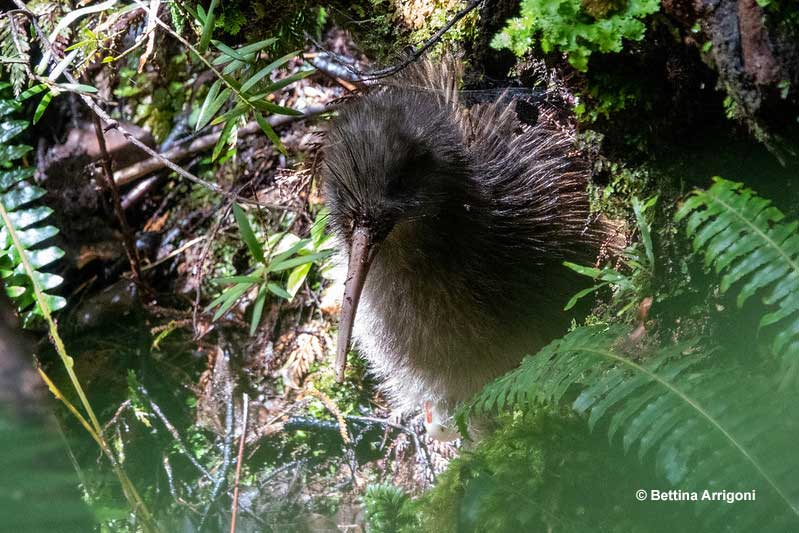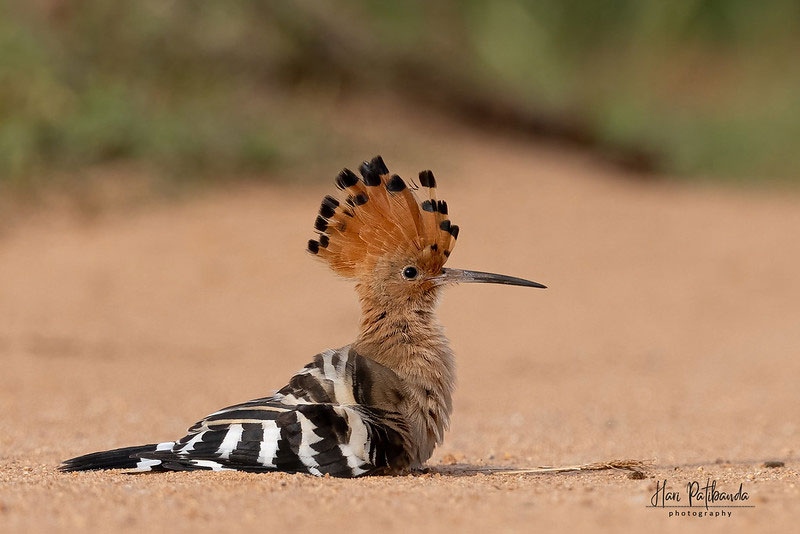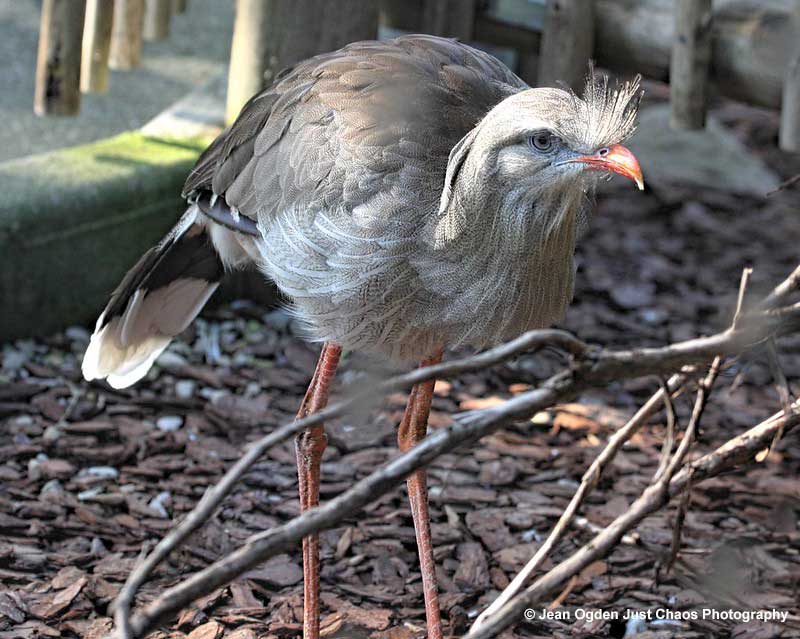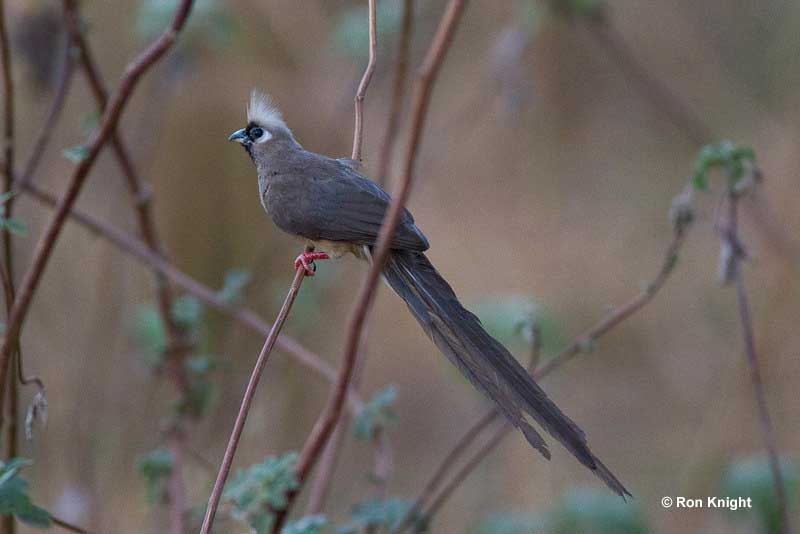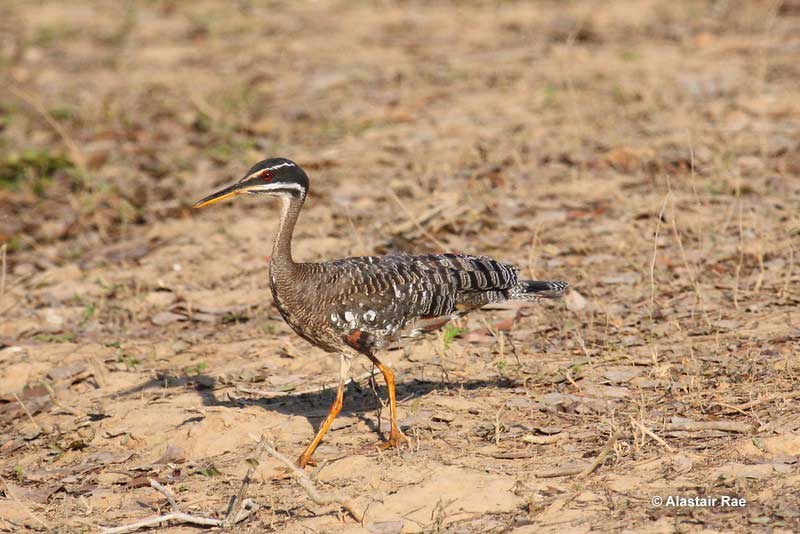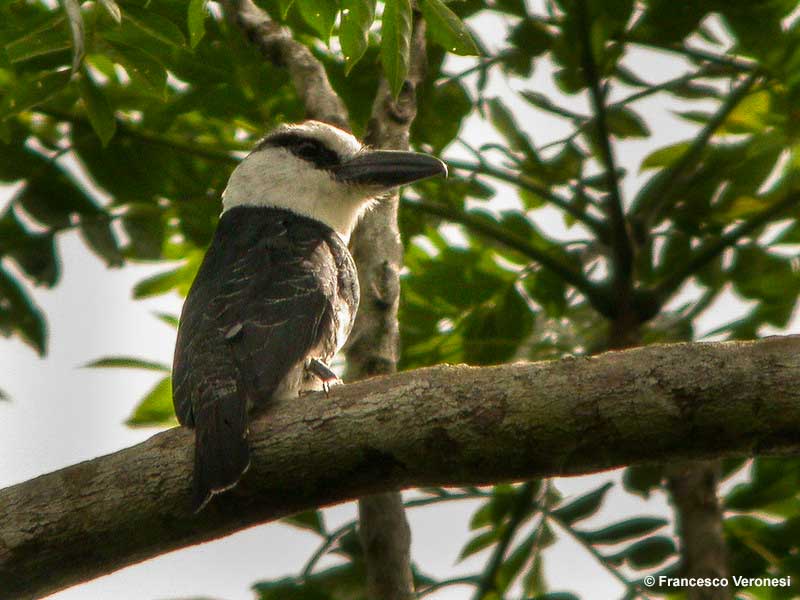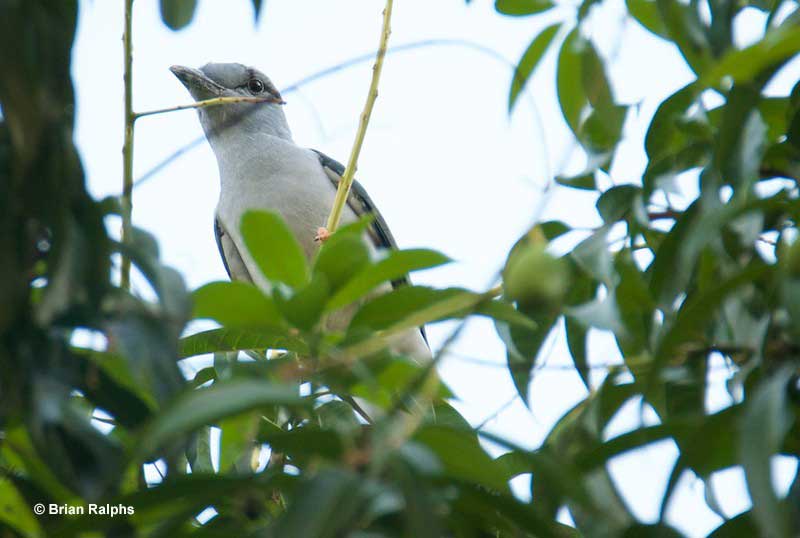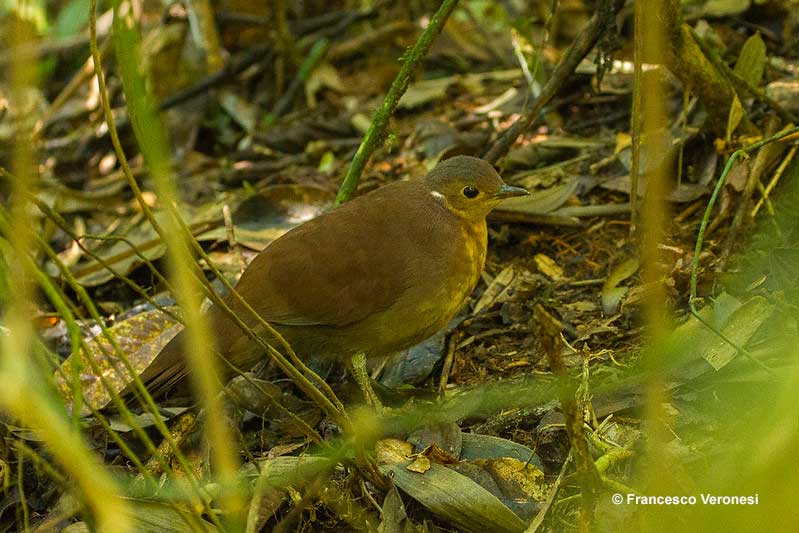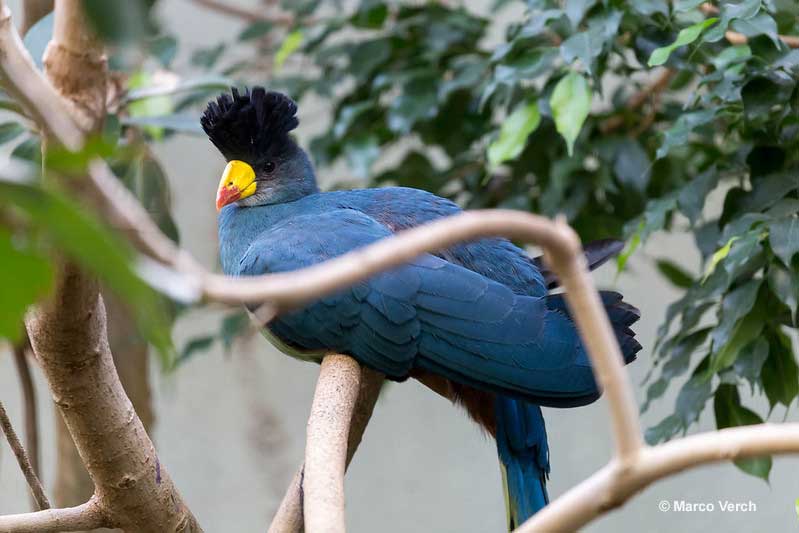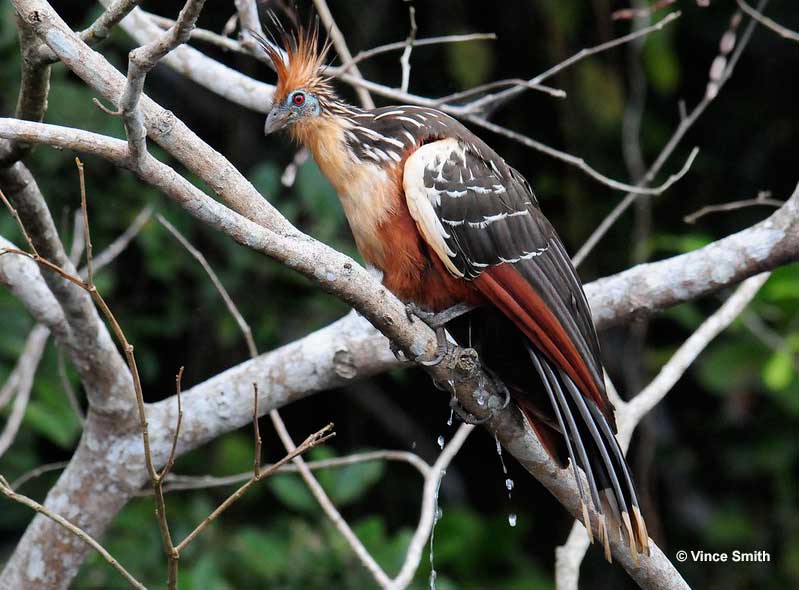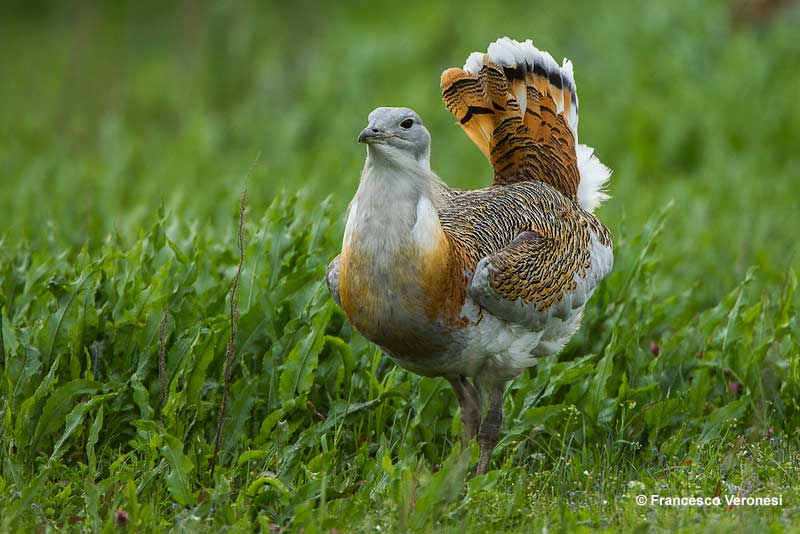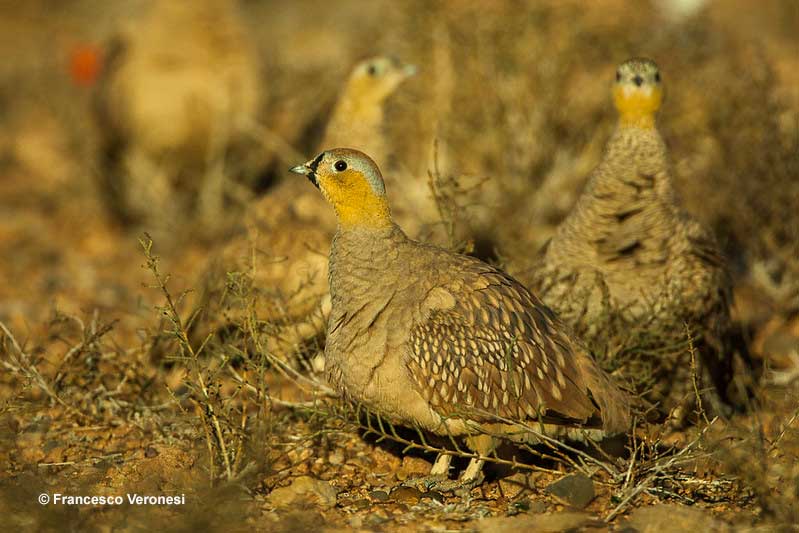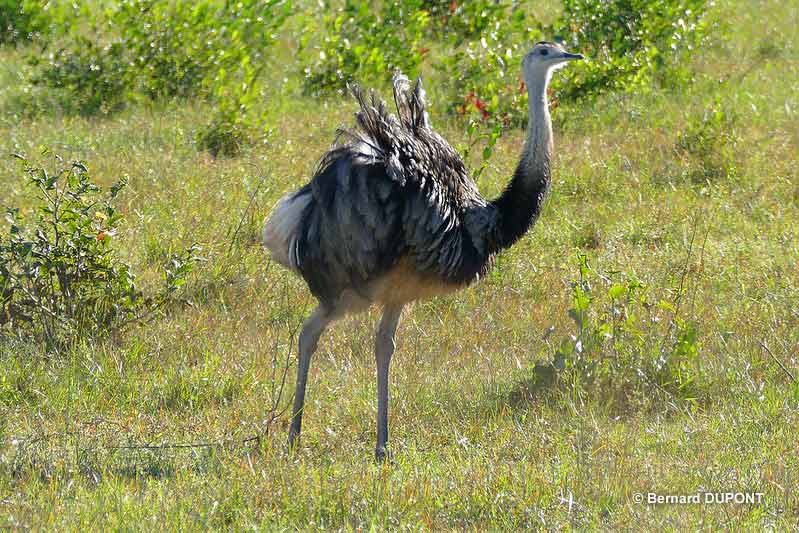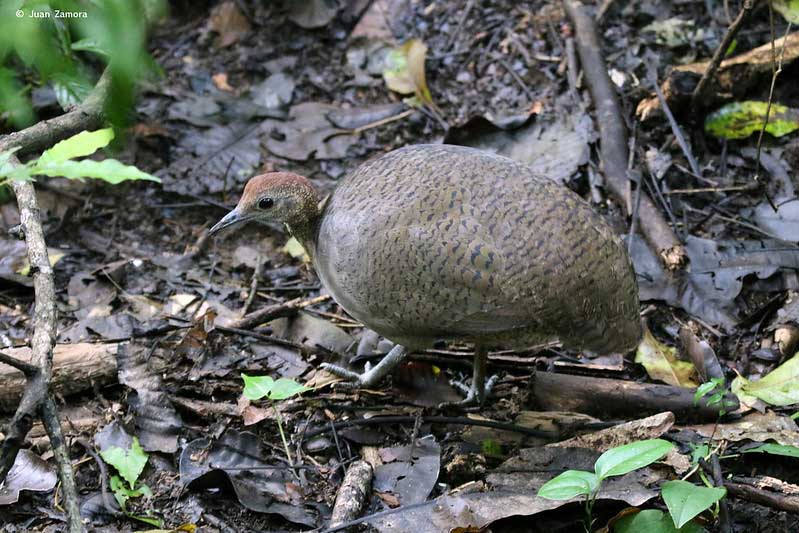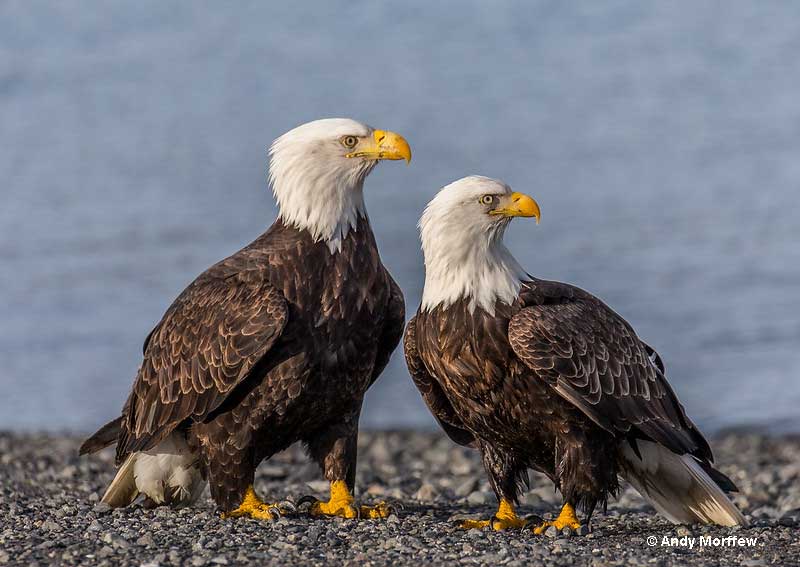
Birds come in all shapes and sizes! They aren’t just warblers, robins, and other small songbirds. The avian kingdom also includes eagles, owls, hummingbirds, storks, and even ostriches!
To help make sense of the many different types of birds, scientists place related groups of birds into various avian families. In turn, those families are categorized into around 40 different “orders.”
Which bird families are in each order? Where can we see some of these different types of birds?
See this article for answers to these and other questions about bird classification!
On this page
- Accipitriformes
- Anseriformes
- Apterygiformes
- Bucerotiformes
- Caprimulgiformes
- Cariamiformes
- Casuariiformes
- Cathartiformes
- Charadriiformes
- Ciconiiformes
- Coliiformes
- Columbiformes
- Coraciiformes
- Cuculiformes
- Eurypygiformes
- Falconiformes
- Galbuliformes
- Galliformes
- Gaviiformes
- Gruiformes
- Leptosomiformes
- Mesitornithiformes
- Musophagiformes
- Opisthocomiformes
- Otidiformes
- Passeriformes
- Pelecaniformes
- Phaethontiformes
- Phoenicopteriformes
- Piciformes
- Podicipediformes
- Procellariiformes
- Psittaciformes
- Pteroclidiformes
- Rheiformes
- Sphenisciformes
- Strigiformes
- Struthioniformes
- Suliformes
- Tinamiformes
- Trogoniformes
- Frequently Asked Questions
Accipitriformes
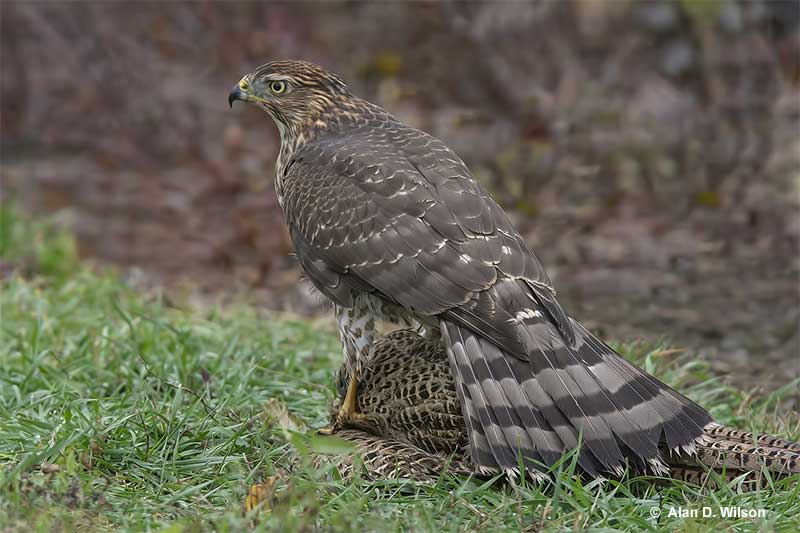
Accipitriformes are diurnal birds of prey like hawks and eagles. This order includes their family (the Accipitridae), as well as families for the Ospreys and the unique Secretarybird of Africa.
We find members of these bird families in every type of habitat and on all continents except for Antarctica. All members of this order are either carnivores or scavengers with sharp, hooked beaks, and talons.
Some, like the Swainson’s Hawk, are long-distance migrants, but most are resident species. Some species soar high overhead, while others are adapted to hunting inside forests. Several species are also restricted to small islands.
- Accipitridae: Bald Eagles, Cooper’s Hawks, Red-tailed Hawk, Northern Goshawks
- Pandionidae: Ospreys
- Sagittariidae: Secretarybird
Anseriformes
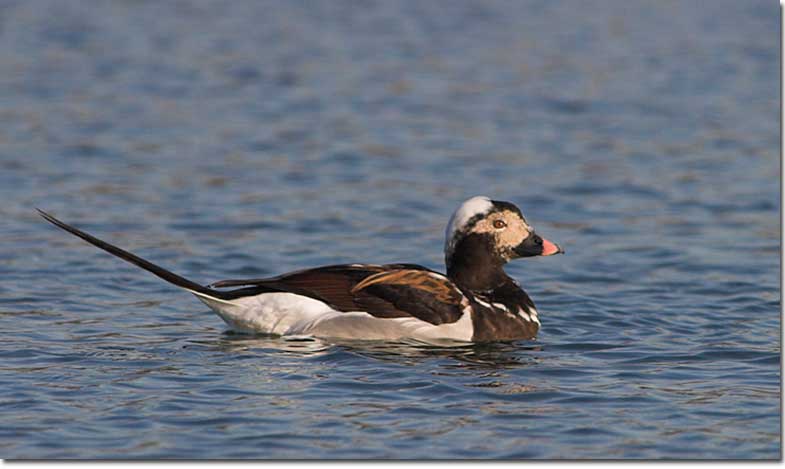
The Anseriformes order consists of waterfowl families. While most species in this order are members of the duck family, there are also two other families of odd, goose-like birds.
These two families are the big, heavy Screamers of South America, and the Magpie Goose of Australia. Various members of the Anatidae are aquatic birds that live on every continent except for Antarctica, and they all have strong, thick legs with either webbed feet or feet with long toes.
Related: Bird names starting with A
Most species also have flat, duck-like beaks and most feed on vegetation and small aquatic animals. However, some ducks only eat fish and others eat mollusks.
- Anhimidae: Northern Screamer, Southern Screamer, Horned Screamer
- Anseranatidae: Magpie Geese
- Anatidae: Mallard, Canada Goose, Whooper Swan, Long-tailed Duck
Apterygiformes
The Apterygiformes only have one family, the Kiwis. These unique birds are mostly nocturnal, flightless, and have hair-like feathers.
They use their stout, strong legs to walk on the ground as they search for worms, bugs, and other small creatures. Kiwis find these food items by probing into damp ground with their long beaks. Seeing these special birds would be fun but it’s not easy!
These one of a kind birds only live in New Zealand and even there, they can be tough to find. They mostly live in protected or remote areas, or on small islands. Seeing them also usually requires guided night tours in the right places.
- Apterygidae: Little Spotted Kiwi, Southern Brown Kiwi, Okarito Brown Kiwi, Great Spotted Kiwi
Bucerotiformes
This order is composed of bird families that live in Europe, Asia, and Africa. Most species live in tropical habitats in Africa, and several hornbill species also occur in the tropical forests of Asia. The odd-looking Hoopoe is the only member of this order that lives in Europe.
These birds are characterized by long or heavy beaks. The hornbills in particular, have huge, heavy bills and somewhat resemble toucans. Many species also have colorful plumage although the African hornbills are mostly black and white.
The Bucerotiformes nest in tree cavities, and feed on fruit, insects, and small animals. Several are threatened by deforestation.
- Upupidae: Eurasian Hoopoe, Madagascar Hoopoe
- Phoeniculidae: Green Woodhoopoe, Violet Woodhoopoe, Common Scimitarbill, Forest Scimitarbill
- Bucorvidae: Absynnian Ground-Hornbill, Southern Ground-Hornbill
- Bucerotidae: Oriental Pied Hornbill, Piping Hornbill, Great Hornbill, Long-tailed Hornbill
Caprimulgiformes
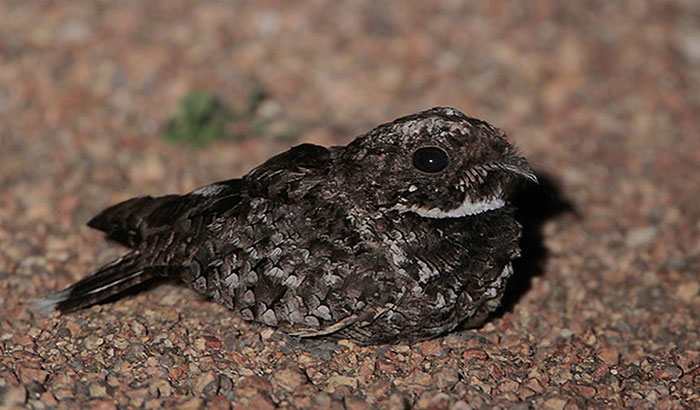
The Caprimulgiformes are made up of nocturnal birds, and aerial birds like swifts, treeswifts, and even hummingbirds!
Although hummingbirds have been placed in their own order, surprisingly, recent DNA studies have shown that they are related to nightjars and other similar nocturnal bird families.
The nocturnal families in this order have fluffy, camouflaged plumage and wide mouths. They mostly feed on insects and live on all continents except for Antarctica. Swifts and treeswifts forage for insects in flight, and hummingbirds also catch small insects but mostly feed on nectar.
Unlike other members of this order, hummingbirds are tiny, brightly colored, and only live in the Americas.
- Podargidae: Marbled Frogmouth, Tawny Frogmouth, Great Frogmouth, Sri Lanka Frogmouth
- Caprimulgidae: Eastern Whip-poor-will, Eurasian Nightjar, Great-eared Nightjar, Common Poorwill
- Nyctibiidae: Common Potoo, Great Potoo, Long-tailed Potoo, Andean Potoo
- Steatornithidae: Oilbird
- Aegothelidae: Feline Owlet-nightjar, Mountain Owlet-nightjar, Australian Owlet-Nightjar, Starry Owlet-nightjar
- Apodidae: Alpine Swift, Chimney Swift, Vaux’s Swift, Common Swift
- Hemiprocnidae: Whiskered Treeswift, Crested Treeswift, Moustached Treeswift, Gray-rumped Treeswift
- Trochilidae: Ruby-throated Hummingbird, Allen’s Hummingbird, Anna’s Hummingbird, Green-breasted Mango
Cariamiformes
The Cariamiformes include the last surviving members of terrestrial, long-legged birds that lived in South America for millions of years.
Related, extinct species include the prehistoric “terror birds”; big flightless predators that may have survived up to 20,000 years ago! The only current members of this order are the seriemas, two long-necked birds with long tails, and somewhat raptor-like beaks.
Seriemas walk through open and dry forest habitats and use their beaks to catch snakes, lizards, rodents, and other small animals. They can also eat some grain and fruit.
Both of these species are restricted to Brazil, Bolivia, Paraguay, Uruguay, and northern Argentina.
- Cariamidae: Red-legged Seriema, Black-legged Seriema
Casuariiformes
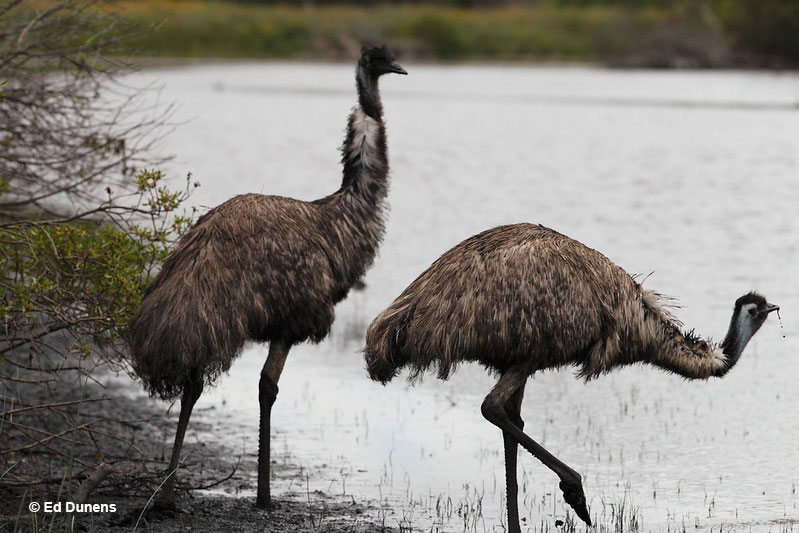
The Casuariformes are an ancient order of birds that look a bit like dinosaurs! These big, flightless birds have hair-like plumage and long, strong legs. The cassowaries also have sharp claws on their toes that they use to defend themselves.
Indeed, cassowaries can be dangerous and have killed people by kicking them with their toe claws! However, the four species in this order are usually shy and prefer to eat fruit and small creatures.
They have black or brown plumage with some colors on their bare heads.
We only find these birds in Australia and New Guinea. While Emus are easy to see, the Cassowaries can be shy and reclusive.
- Casuariidae: Emu, Northern Cassowary, Southern Cassowary, Dwarf Cassowary
Cathartiformes
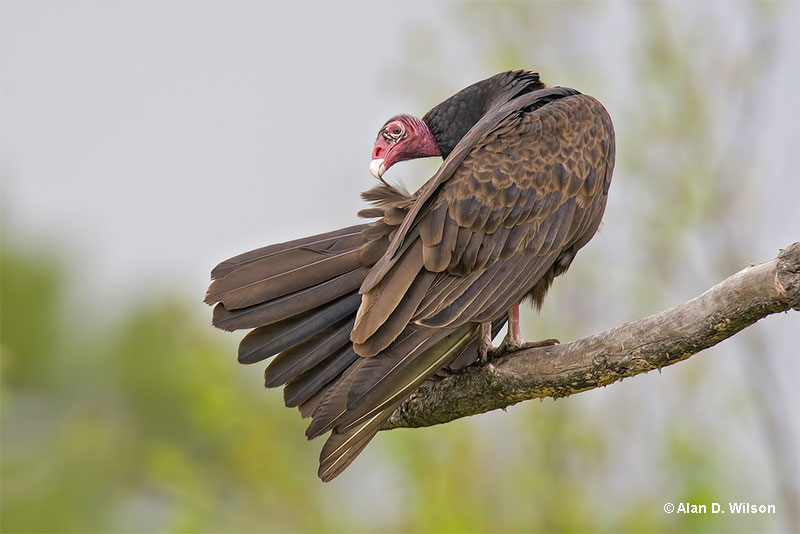
© Alan D. Wilson
This avian order used to be grouped with hawks and eagles. However, recent DNA studies have shown that the New World Vultures deserve their own order.
It is composed of one family and includes the familiar Turkey Vulture, other vultures that live in North and South America, and the two condor species.
All members of this family play important ecological roles as scavengers and are usually seen soaring high overhead. They also live in a variety of habitats and most are common. However, the Andean Condor is rare in some regions, and the California Condor is a critically endangered species restricted to parts of the southwestern USA.
- Cathartidae: Black Vultures, Turkey Vultures, California Condors, King Vultures
Charadriiformes
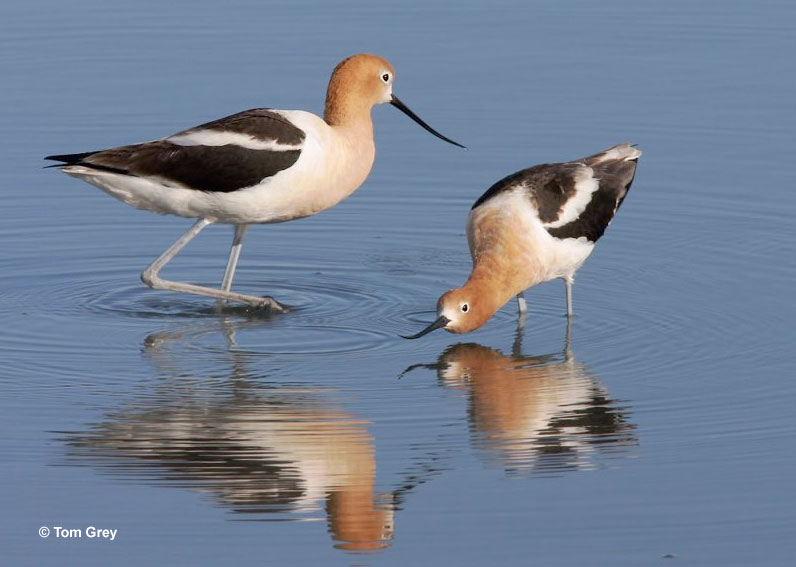
This is a big order of birds that includes sandpipers, plovers, oystercatchers, and other, similar sandpiper-like birds. Gulls, terns, puffins, auks, and skuas are also included in this order.
They occur throughout the world with many living in cold, polar regions. These bird families vary in appearance but many have webbed feet, longish legs, and live in or near wetlands. Some species have also become adapted to arid habitats, and most feed on fish, insects, and various small creatures.
However, the skuas are predatory birds that steal food from gulls and terns and eat all sorts of small animals including birds.
- Burhinidae: Double-striped Thick-knees, Peruvian Thick-knees, Stone Curlews, Bush Thick-knees
- Pluvianidae: Egyptian Plovers
- Recurvirostridae: Black-necked Stilts, American Avocets, Pied Avocets, Black Stilts
- Haematopodidae: American Oystercatchers, Black Oystercatchers, Eurasian Oystercatchers, Pied Oystercatchers
- Charadriidae: Killdeers, Black-bellied Plovers, Semipalmated Plovers, Northern Lapwings
- Jacanidae: Northern Jacanas, African Jacanas, Wattled Jacanas, Pheasant-tailed Jacanas
- Scolopacidae: Spotted Sandpipers, Lesser Yellowlegs, Common Redshanks, Willets
- Stercorariidae: Great Skuas, South Polar Skuas, Pomarine Jaegers, Parasitic Jaegers
- Alcidae: Razorbills, Thick-billed Murres, Atlantic Puffins, Tufted Puffins
- Laridae: Herring Gulls, Royal Terns, Common Terns, Great Black-backed Gulls
Ciconiiformes
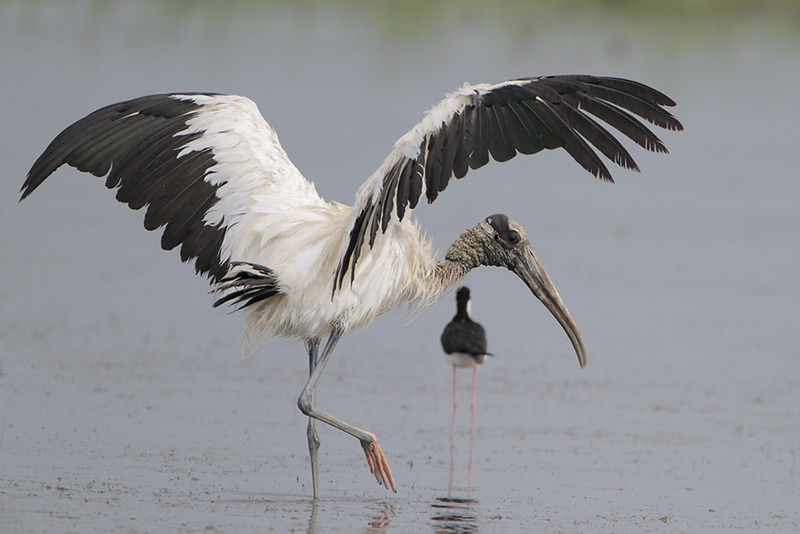
The Ciconiiformes have one bird family; the storks. These familiar, big birds have long legs, long necks, and big beaks.
They also soar on huge, broad wings and have short, broad tails, and a couple of species are long-distance migrants. However, most live in warm or tropical regions where they feed on fish and other aquatic creatures.
Some storks are also scavengers and can feed on carcasses in company with vultures. Storks are social birds that typically flock together and concentrate at food sources.
We find storks in various wetland habitats from the southern USA to Argentina, in Africa, Eurasia, and Australia.
- Ciconiidae: Wood Storks, Jabirus, Greater Adjutants, White Storks
Coliiformes
The Coliiformes are an order of unique birds that only live in sub-Saharan Africa. Mousebirds are smallish birds with long pointed tails, gray or pale brown plumage, and small crests.
They are very social and flocks forage for fruit, leaves, and plant buds in open woodlands. While foraging, Mousebirds are very acrobatic and can run along branches. They also have fast and direct flight.
On cold nights, many Mousebirds can huddle together, and they can enter into a type of temporary hibernation known as “torpor.”
Mousebirds also have either a small black mask or red skin around their eyes. They do not migrate.
- Collidae: Speckled Mousebirds, Red-naped Mousebirds, White-backed Mousebirds, Blue-naped Mousebirds
Columbiformes

The Columbiformes are a successful group of birds that occur on all continents except for Antarctica. This order is composed of one, well known family; the pigeons.
In addition to the familiar pigeons, in most places, there are one or two other common pigeon species that live in towns and gardens. There are also dozens pigeons and doves that frequent a wide variety of habitats.
Many are beautiful birds, the fruit-doves of Asia, Australia, and Pacific Islands being some of the most incredibly colored birds on the planet!
Pigeons and doves mostly eat seeds and fruit, have small beaks, and use their pointed wings for fast, direct flight.
- Columbidae: Rock Pigeons, Mourning Doves, Band-tailed Pigeons, Inca Doves
Coraciiformes
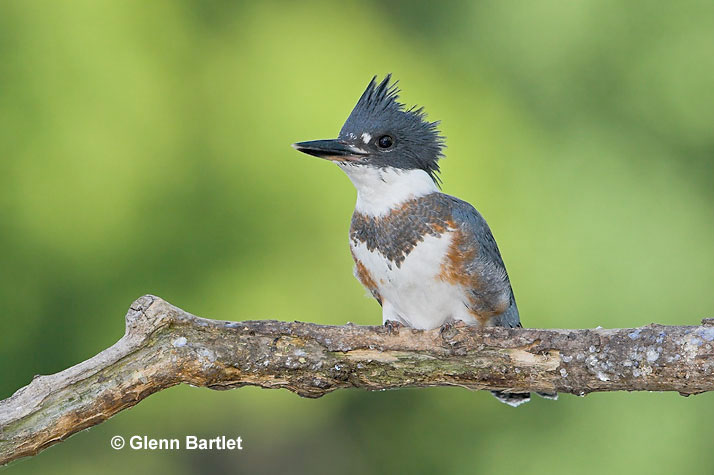
The Coraciiformes are birds with long or big beaks like kingfishers, bee-eaters, rollers, and motmots. Although some species live in cold, northern places, almost all occur tropical regions. We find them on every continent expect Antarctica and on many islands.
Several species have short legs and perch for long periods until they spot an insect, fish (kingfishers), or other small creature. The bird then flies out to snatch the animal with its beak before coming back to its perch.
However, the ground-rollers of Madagascar have long legs, and bee-eaters fly around like swallows. Many species are beautiful, colorful birds, and most nest in burrows in the ground.
- Todidae: Jamaican Tody, Puerto Rican Tody, Cuban Tody, Broad-billed Tody
- Momotidae: Lesson’s Motmot, Turquoise-browed Motmot, Tody Motmot, Blue-throated Mot Motmot
- Alcedinidae: Belted Kingfisher, Ringed Kingfisher, Stork-billed Kingfisher, Green Kingfisher
- Meropidae: Red-bearded Bee-eater, European Bee-eater, Northern Carmine Bee-eater, Rainbow Bee-eater
- Coraciidae: European Roller, Lilac-breasted Roller, Blue-bellied Roller, Dollarbird
- Brachypteraciidae: Scaly Ground-Roller, Short-legged Ground-Roller, Long-tailed Ground-Roller, Pitta-like Ground-Roller
Cuculiformes
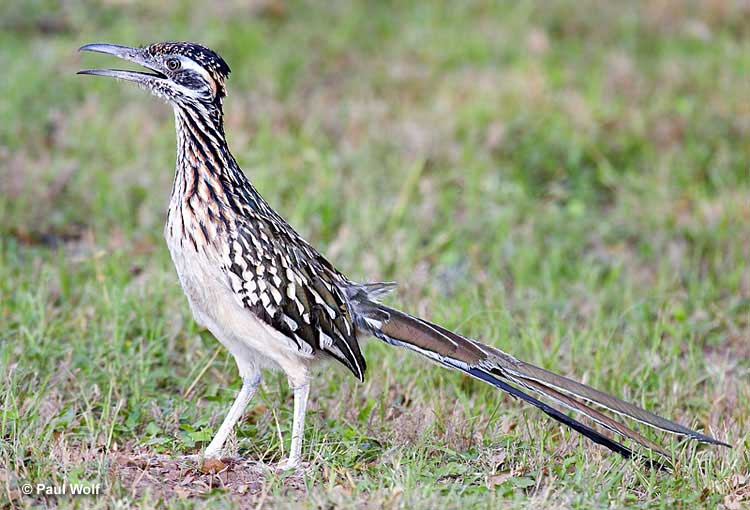
This order has one family of birds: the cuckoos. These long-tailed birds live on all continents except for Antarctica. Many species live in Asia, and all cuckoos that breed in cold regions migrate to tropical habitats for the winter.
Cuckoos are known for laying their eggs in the nests of other birds, but several species also build their own nests.
Related: What is brood parasitism?
Most species have pleasant brown or gray plumage but there are some small cuckoos in Africa and Asia with beautiful, shining purple, yellow, and emerald colors!
Cuckoos eat caterpillars, insects, and other small animals. Roadrunners and other large terrestrial cuckoo species can also catch snakes and small birds!
Eurypygiformes
This is an old order of birds composed of two families. Each family has one species and one of the families, the Kagu, is restricted to forests on New Caledonia! The other family lives in wetland habitats from Chiapas, Mexico to South America.
These birds have long legs, and pointed, heron-like beaks. They catch insects, frogs, and other small aquatic creatures that they pick from water and the ground.
Both members of this order tend to be shy birds that do not form flocks, and the Kagu is flightless.
When threatened, these birds open their broad wings to show a big “eye-spot” pattern on each wing.
- Rhynochetidae: Kagus
- Eurypygidae: Sunbitterns
Falconiformes
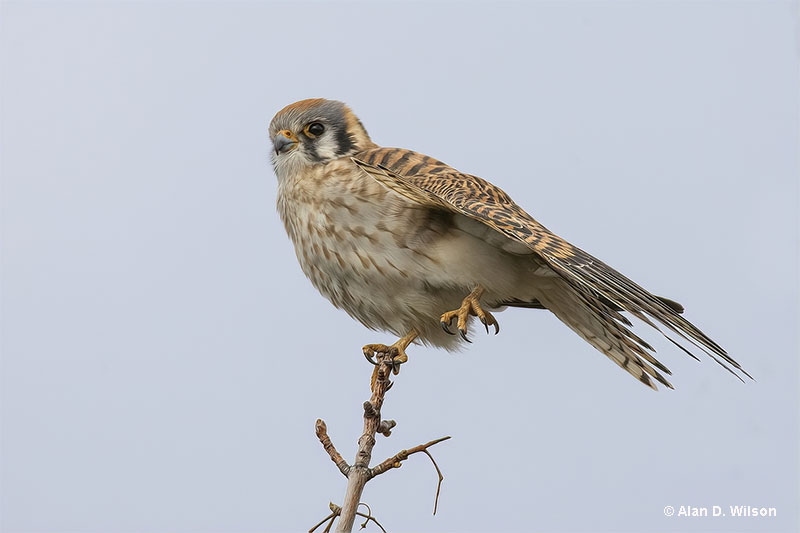
This order is made up of one, well known avian family; the falcons. Although these raptors have sharp beaks and talons like hawks, they aren’t related to them!
Falcons are a separate group of birds that also evolved to become predators. Peregrine Falcons and other similar “falco” falcon species have long, pointed wings, tapered tails, and very fast flight.
They catch birds in flight and some species also prey on birds and mammals on the ground. These fast-flying falcons occur on all continents except Antarctica. In tropical areas of North and South America, caracaras and other falcons with broad wings occur. These birds scavenge and catch small animals.
- Falconidae: Peregrine Falcons, Merlins, American Kestrels, Crested Caracaras
Galbuliformes
This order includes two families of birds that occur in tropical forest habitats from southern Mexico to northern Argentina. Both have small legs, while the puffbirds are characterized by big heads with large beaks, and the jacamars have long, needle-like beaks.
Puffbirds also have dull and camouflaged plumage, while many jacamars have metallic green feathers! Both of these families nest in burrows or holes made in termite mounds and trees. They also wait on perches until they see an insect or other small creature.
When they spot prey, they quickly fly out, snatch it and come back to their perch.
- Bucconidae: White-necked Puffbird, Pied Puffbird, White-fronted Nunbird, Brown Nunlet
- Galbulidae: Rufous-tailed Jacamar, Paradise Jacamar, Green-tailed Jacamar, Bronzy Jacamar
Galliformes
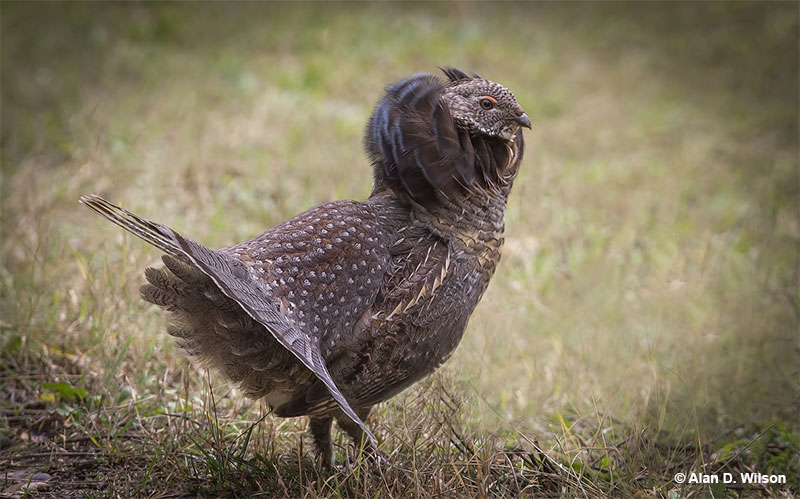
The Galliformes are the chicken-like birds, pheasants, and similar species. They occur on all continents except for Antarctica and most live on the ground. However, the chachalacas and guans of tropical America are arboreal.
Galliformes have strong legs and feet, short broad wings, and stout, chicken-like beaks. Most have mottled camouflaged plumage and feed on insects, other small creatures, seeds, and fruit.
However, the pheasants have long, decorative tails and the Indian Peafowl and several other pheasant species have incredibly colorful plumage.
Although Gallifornes can fly, they usually just fly for short distances on rapidly beating wings.
- Megapodiidae: Orange-footed Megapodes, Malleefowls, Maleos, Australian Brushturkeys
- Cracidae: Crested Guans, Plain Chachalacas, Great Curassows, Horned Guans
- Numididae: Helmeted Guineafowls, White-breasted Guineafowls, Black Guineafowls, Vulturine Guineafowls
- Odontophoridae: Northern Bobwhites, Mountain Quails, California Quails, Marbled Wood-Quails
- Phasianidae: Ring-necked Pheasants, Ruffed Grouse, Spruce Grouse, Indian Peafowls (peacocks)
Gaviiformes
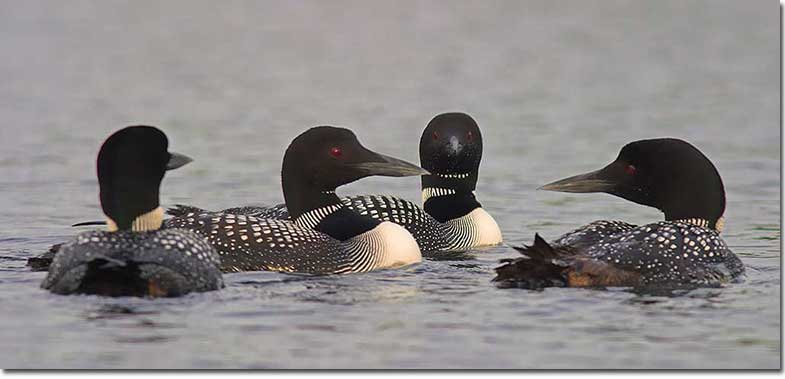
The Gaviiformes are another avian order composed of one bird family. The loons are highly aquatic birds that breed on cold lakes and rivers in the northern hemisphere. They even range into the Arctic and all migrate to milder waters for the winter months.
Loons are so aquatic, these big, heavy birds can’t even walk on land. They dive beneath the surface to catch fish underwater with their sharp, pointed beaks. Loons are also good fliers with strong, direct flight but have to run on the water to take to the air.
These special birds are also known for their mysterious sounding, yodeling vocalizations, often given at night.
- Gaviidae: Common Loons, Arctic Loons, Red-throated Loons, Yellow-billed Loons
Gruiformes
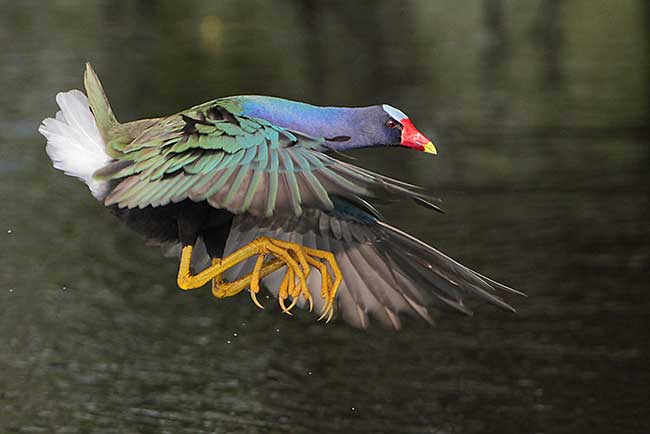
This order of birds includes the tall and majestic cranes, reclusive rails, snail-eating Limpkins, and a few other, tropical families.
We find Gruiformes on all continents except for Antarctica. Rails in particular, have colonized most islands in the world, even some of the most remote islands on the planet!
Although they come in many sizes, these birds are known for living in wetland habitats, and having stout beaks. Most feed on a variety of small aquatic creatures, while cranes also eat tubers and grains.
Several species are also highly migratory and many are threatened by habitat loss, especially the cranes and the critically endangered Masked Finfoot of southern Asia.
- Sarothruridae: Madagascar Forest Rails, White-spotted Flufftails, Madagascar Flufftails, Slender-billed Flufftails
- Rallidae: Virginia Rails, Clapper Rails, Purple Gallinules, American Coots
- Heliornithidae: Sungrebes, African Finfoots, Masked Finfoots
- Aramidae: Limpkins
- Psophiidae: Pale-winged Trumpeters, Gray-winged Trumpeters, Dark-winged Trumpeters
- Gruidae: Whooping Cranes, Sandhill Cranes, Siberian Cranes, Hooded Cranes
Leptosomiformes
This order is made up of just one bird family and one species, the Cuckoo-Roller. It only takes one look at this unique bird to understand why it deserves its own order!
Nothing looks like this big-headed bird with a stout beak and rather short but strong legs. Males are mostly dark green and gray while females are mottled reddish-brown.
Cuckoo-Rollers only live on Madagascar and nearby islands. Some ornithologists wonder if the ones that live on the smaller islands might be a separate species but, for the moment, there is just one Cuckoo-Roller species.
These birds hunt for lizards, insects, and other small creatures.
- Leptosomisidae: Cuckoo-rollers
Mesitornithiformes
This is an order of birds with one family and three species only found in Madagascar. The three species of Mesites live in different habitats on the island where they forage on the ground for insects, seeds, and fruit.
These unique birds are around the size of a thrush, have longish tails, a hunched appearance, and sharp or curved beaks. They use their bills to flick leaves and other vegetation aside as they search for bugs.
Mesites don’t flock together and tend to be shy birds that occur on their own. They also have brown or gray plumage with some markings.
- Mesitornithidae: White-breasted Mesite, Brown Mesite, Subdesert Mesite
Musophagiformes
Musophagiformes are an order with one family; the turacos. There are 23 species of turacos that frequent the forests and woodlands of sub-Saharan Africa. Although the plaintain-eaters and go-away-birds are gray and white, other turaco species have beautiful, brightly colored plumages.
Many are green with purple, red, or pink highlights, some are deep blue or violet, and many have wispy crests. These beautiful birds forage for fruits and other small food items in bushes and trees.
None are migratory and some species are restricted to small areas of isolated mountain ranges. A few species are also threatened by habitat destruction.
- Musophagidae: Great Blue Turaco, Ross’s Turaco, Bare-faced Go-away-bird, Western Plaintain-eater
Opisthocomiformes
This order has one family and species; the enigmatic Hoatzin. These odd reddish-brown and tawny birds have a wispy crest, longish tail, and stout beak. Young birds also have claws on the front part of their wings to help them climb back into vegetation if they fall in the water!
Based on that characteristic, Hoatzins were often considered to be one of the most ancient types of birds. However, DNA studies have shown that this is probably not the case. Even so, Hoatzins are still unique birds that frequent vegetation above oxbow lakes and other wetlands in Amazonia.
Hoatzins feed on leaves and digest vegetation a bit like a cow!
- Opisthocomidae: Hoatzins
Otidiformes
This order includes one family of birds that live in Eurasia, Africa, and Australia. Bustards are heavy, terrestrial birds with long, thick necks and long legs. They also have big, broad wings, short tails, and strong, stout beaks.
Bustards forage by walking through grasslands and other open habitats and picking up insects and small animals with their beaks. Most species are permanent residents in Africa, but a few species that breed in Eurasia migrate south for the winter.
These birds are also known for their spectacular displays, where they show fluffy feathers or even jump in the air. Sadly, many bustards are endangered by habitat loss and hunting.
- Otididae: Great Bustards, Little Bustards, Kori Bustards, Bengal Floricans
Passeriformes
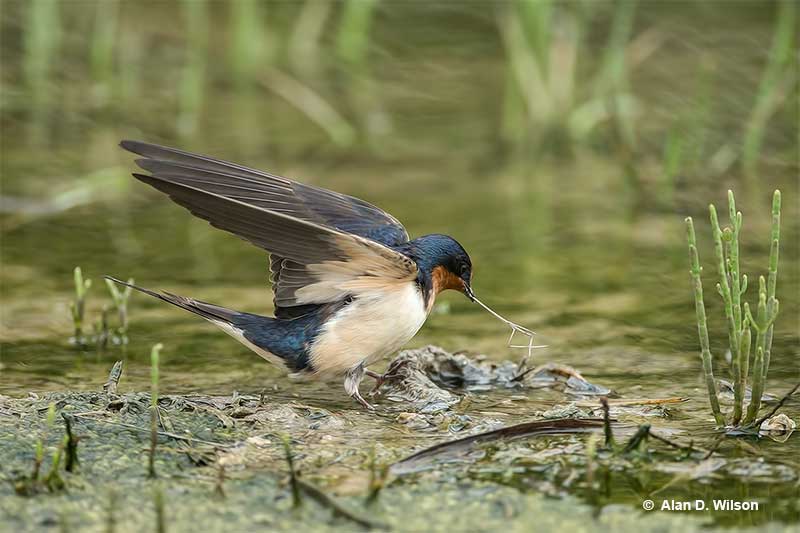
This is the biggest order of birds and includes most small bird species. Passeriformes include the many families of songbirds, including thrushes, warblers, nuthatches, sparrows, crows, and other familiar backyard birds.
The many members of this order are characterized by short or medium-length legs with toes that can grasp branches, fairly small beaks, and small size. True to their name, songbirds are also known for their beautiful and complex songs.
We find Passeriformes throughout the world except for the continent of Antarctica. In most places, they are the most commonly seen birds and include various familiar species. Many species feed on insects, seeds, and berries.
- Pittidae: Fairy Pittas, Blue Pittas, Garnet Pittas, Philippine Pittas
- Thamnophilidae: Spotted Antbirds, Dusky Antbirds, Chestnut-backed Antbirds, Barred Antshrikes
- Pipridae: Red-capped Manakins, White-bearded Manakins, Long-tailed Manakins, Blue-crowned Manakins
- Tyrannidae: Fork-tailed Flycatchers, Eastern Phoebes, Vermilion Flycatchers, Eastern Kingbirds
- Menuridae: Superb Lyrebirds, Albert’s Lyrebirds
- Laniidae: Loggerhead Shrikes, Northern Shrikes, Red-backed Shrikes, Woodchat Shrikes
- Corvidae: American Crows, Common Ravens, Blue Jays, Black-billed Magpies
- Paridae: Blue Tits, Tufted Titmouse, Black-capped Chickadees, Mountain Chickadees
- Hirundinidae: Barn Swallows, Bank Swallows, Purple Martins, Cliff Swallows
- Fringillidae: American Goldfinches, Lesser Goldfinches, Evening Grosbeaks, Scrub Euphonias
- Cardinalidae: Northern Cardinals, Rose-breasted Grosbeaks, Indigo Buntings, Western Tanagers
- Thraupidae: Blue-gray Tanagers, Golden-hooded Tanagers, Paradise Tanagers, Crimson-collared Tanagers
Pelecaniformes
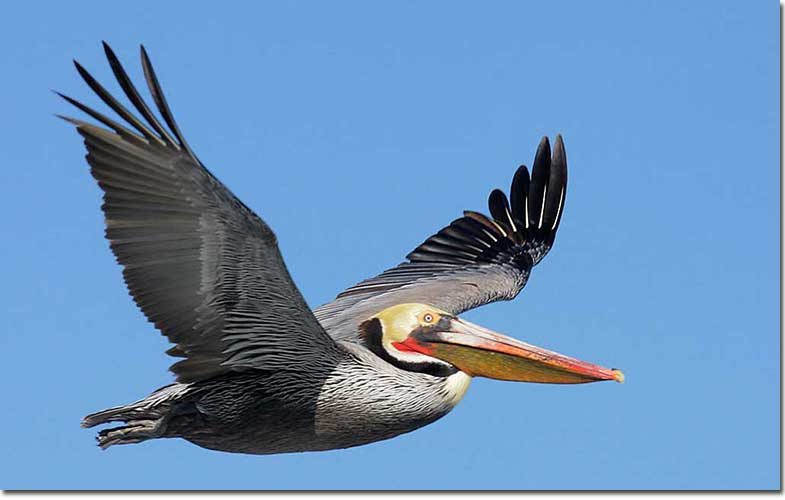
This order includes several bird families that live in wetlands and coastal habitats. Most are large birds like pelicans and herons, while the smallest members of this order are the Least Bittern and other similar small bittern species.
Most have long necks and broad wings, and are found on all continents except Antarctica.
These birds forage for fish, insects, and other aquatic creatures in several ways. Pelicans scoop up fish with their big, pouched bills, and herons stab at prey with their long sharp beaks. Ibises pick small creatures from the mud, and spoonbills swipe their bill back and forth in shallow water to catch small creatures.
- Pelecanidae: Brown Pelicans, American White Pelicans, Pink-backed Pelicans, Dalmatian Pelicans
- Balaenicipitidae: Shoebills
- Scopidae: Hamerkops
- Ardeidae: Great Blue Herons, Great Egrets, American Bitterns, Green Herons
- Threskiornithidae: White Ibises, Scarlet Ibises, Roseate Spoonbills, Royal Spoonbills
Phaethontiformes
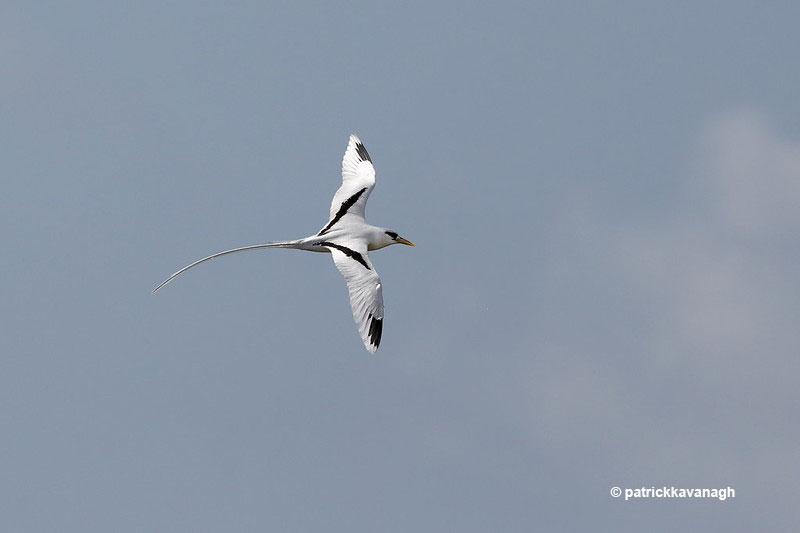
Members of this order include one bird family that frequents warm ocean waters throughout the world. The three species of tropicbirds are white, gull-sized birds with long, elegant, flowing tails.
They have some black markings on their plumage, have stout, sharp yellow or red beaks, and one species has a long, red tail. Tropicbirds mostly breed on remote islands and spend most of their time in pelagic waters far from land.
Tropicbirds wander and watch for bait fish driven to the surface by big predatory fish and dolphins. They then dive into the water to catch bait fish, squid, flying fish, and other prey.
- Phaethontidae: Red-billed Tropicbird, Red-tailed Tropicbird, White-tailed Tropicbird
Phoenicopteriformes
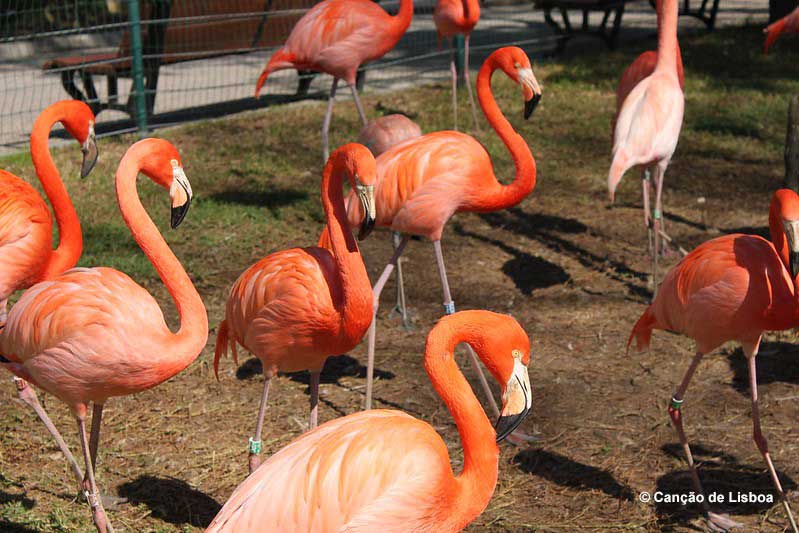
The Phoenicopteriformes are the flamingoes. This avian family is composed of six birds with long, stilt-like legs, and bent, thick, uniquely shaped beaks.
All flamingos also have varying degrees of pink in their plumage, and black flight feathers on long, broad wings. Flamingos are highly social birds that only occur in places with shallow, salty water where they can forage for brine shrimp and other small creatures.
For this reason, we only see them at scattered sites in parts of Europe, Asia, Africa, the Caribbean, and South America. American Flamingos also occur in southern Florida and can wander further north.
Phoenicopteridae: Greater Flamingos, American Flamingos, Lesser Flamingos, Chilean Flamingos
Piciformes
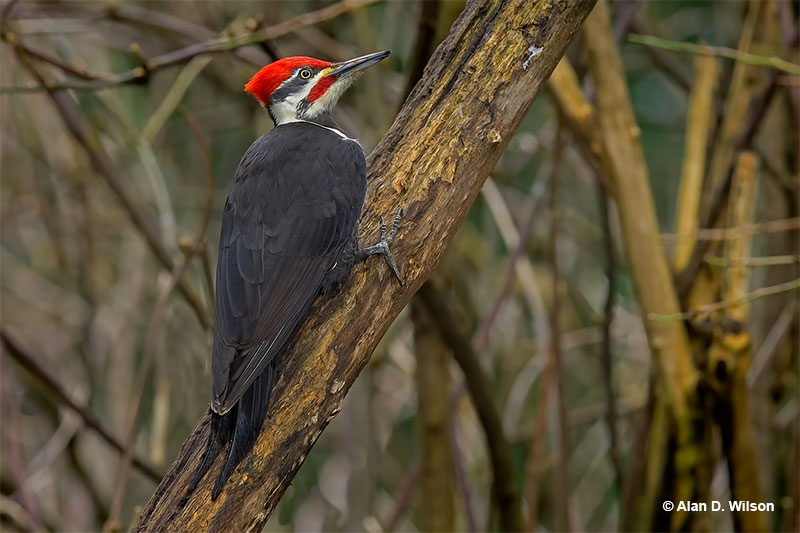
This bird order is best known for the woodpecker family. However, it also includes tropical birds such as barbets, toucans, and honeyguides. They occur on all continents except for Australia and Antarctica.
Most Piciformes have strong and hefty beaks and “zygodactyl” toes where two are on the front part of their feet, and the other two toes are on the back part of their feet. These birds nest in tree cavities although honeyguides leave their eggs in the nests of barbets and woodpeckers!
Several have black and white plumage with beautiful red or yellow colors, while some species are olive-green or reddish-brown.
- Lybiidae: Crested Barbets, Bearded Barbets, White-headed Barbets, Yellow-fronted Tinkerbirds
- Megalaimidae: Great Barbets, Coppersmith Barbets, Lineated Barbets, Red-throated Barbets
- Capitonidae: Red-headed Barbets, Spot-crowned Barbets, Gilded Barbets, Lemon-throated Barbets
- Semnornithidae: Prong-billed Barbets, Toucan Barbets
- Ramphastidae: Keel-billed Toucans, Toco Toucans, Collared Aracaris, Saffron Toucanets
- Indicatoridae: Malaysian Honeyguides, Greater Honeyguides, Spotted Honeyguides, Yellow-rumped Honeyguides
- Picidae: Downy Woodpeckers, Hairy Woodpeckers, Yellow-bellied Sapsuckers, Pileated Woodpeckers
Podicipediformes
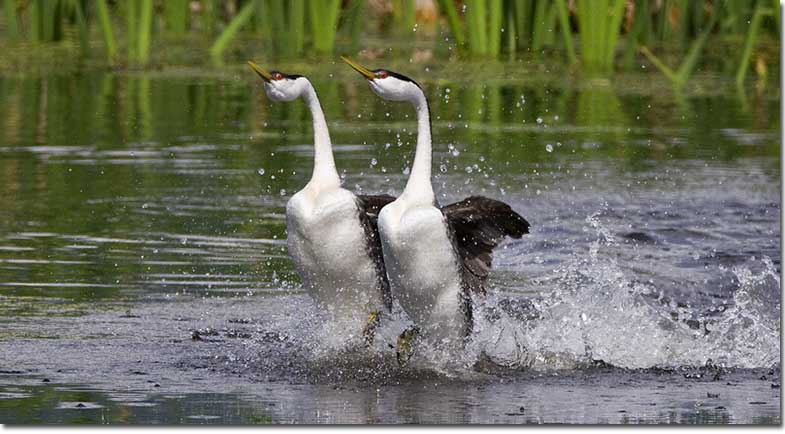
This order includes the grebes, small or medium-sized aquatic birds that live on lakes, ponds, marshes, and other wetland habitats.
Grebes can have sharp or stout beaks that they use to catch fish and other aquatic creatures during underwater dives. They have oddly webbed (lobed) feet on the back part of their bodies, and can’t even walk on land!
Members of this family live on all continents except for Antarctica. While most species can fly and some are migratory, a few species in South America occur in very small areas. Two of those species, the Junin Grebe and the Titicaca Grebe, are flightless.
- Podicipedidae: Pied-billed Grebes, Least Grebes, Eared Grebes, Red-necked Grebes
Procellariiformes
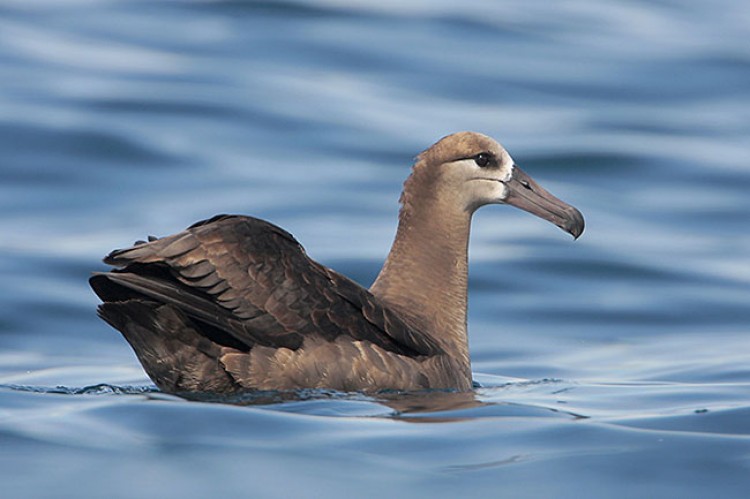
This order has four families of seabirds that occur in oceans throughout the globe. Most nest on islands, with some nesting in burrows, and all have a tube-like structure on their beak to expel excess seawater.
These birds wander over large areas of ocean, usually far from shore. They use their hooked beaks to pick squid, fish, and other food from the surface of the ocean. Several species also dive below the surface to find food, and some also feed at night.
They have long, pointed wings and are masters of flight. These birds also have webbed feet and are plumaged in shades of brown, gray, and black and white.
- Diomedeidae: Wandering Albatrosses, Laysan Albatrosses, Black-footed Albatrosses, Waved Albatrosses
- Oceanitidae: Wilson’s Storm-Petrels, White-faced Storm-Petrels, Black-bellied Storm-Petrels, White-bellied Storm-Petrels
- Hydrobatidae: Black Storm-Petrels, Least Storm-Petrels, Leach’s Storm-Petrels, Ashy Storm-Petrels
- Procellariidae: Sooty Shearwaters, Cory’s Shearwaters, Manx Shearwaters, Black-capped Petrels
Psittaciformes
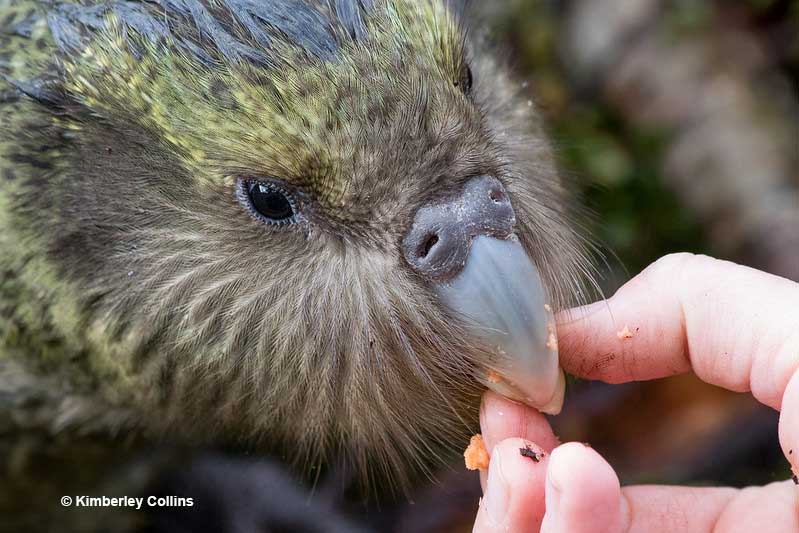
The Psittaciformes are four families of parrots. All parrots, parakeets, macaws, cockatoos, and related species have distinctive, strong beaks they use to crack open seeds and eat fruit.
At least one species, the Kea, has a longer sharp beak that it occasionally uses for scavenging carcasses!
Most members of these bird families are brightly colored in greens, reds, and other colors. However, a few species are dull colored and a few cockatoo species are black and red.
Members of these parrot families mostly occur in tropical regions, or have been introduced to urban areas. All nest in cavities, usually in trees.
- Strigopidae: New Zealand Kaka, Kea, Kakapo
- Cacatuidae: Yellow-crested Cockatoos, Sulphur-crested Cockatoos, Palm Cockatoos, Galahs
- Psittaculidae: Greater Vasa Parrots, Ring-necked Parakeets, Rainbow Lorikeets, Crimson Rosellas
- Psittacidae: Scarlet Macaws, Yellow-headed Parrots, Green Parakeets, African Gray Parrots
Pteroclidiformes
This avian order has one family, the sandgrouse. These distinctive birds look like a blend of a pigeon, grouse, and sandpiper!
They have small heads, several have long pointed tails, and have brown, gray, and black plumage patterns that help camouflage them in the open habitats they prefer.
Sandgrouse live in grasslands, deserts, and other open habitats in Africa (where most species occur), southern Europe, and Asia. These social birds can form large flocks that wander over large areas in search of water and food.
Sandgrouse mostly eat seeds that they pick off the ground, and can fly fast for long distances.
- Pteroclidae: Pin-tailed Sandgrouse, Crowned Sandgrouse, Black-bellied Sandgrouse, Madagascar Sandgrouse
Rheiformes
The Rheas are two species of big, flightless birds that are similar to ostriches and emus. Like those birds, Rheas are ancient species that have hair-like feathers, long, strong legs, and long necks.
Both Rhea species have grayish plumage and can run as fast as 40 miles per hour! The Greater Rhea lives in open grassland and savannah habitats in Brazil and Bolivia south to Argentina. Lesser Rheas occur in high elevation grasslands and Patagonian grassland habitats.
Both species forage for grasses, other bits of vegetation, insects, and some other small creatures as they stroll through their open habitats.
- Rheidae: Greater Rheas, Lesser Rheas
Sphenisciformes

This avian order has one, well-known family of birds; the penguins! These famous, flightless birds mostly live in the cold waters of Antarctica and the southern oceans. However, one species ranges north to Peru, and another only occurs in the Galapagos Islands.
They are highly aquatic and forage for fish, krill, and other aquatic creatures during underwater dives.
Although penguins only waddle on land, they are fantastic swimmers that seem to fly underwater.
Penguins are mostly black and white and have short feathers modified for swimming and keeping them warm. They nest in colonies, sometimes in very large groups on ice fields.
- Spheniscidae: King Penguins, Galapagos Penguins, Gentoo Penguins, Rockhopper Penguins
Strigiformes
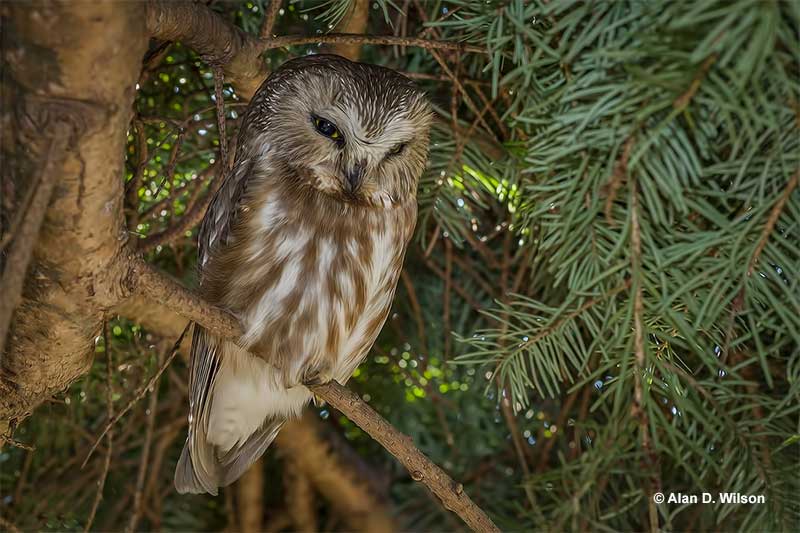
The Strigiformes is an order with two families of popular and mysterious birds – the owls.
All owls have soft, mottled brown or gray plumage, broad wings, and a sharp, hooked beak. They also have strong feet with sharp talons, and have silent flight to help them catch prey at night.
The majority of owls are nocturnal and occur on every continent except for Antarctica. Diurnal species include the Snowy Owl and the tiny pygmy-owls.
Owls are carnivores that catch lots of rodents and many other small animals. Some small owl species also catch insects and scorpions, and some large species in Africa and Asia catch fish!
- Tytonidae: Barn Owls, Ashy-faced Owls, Sooty Owls, Oriental Bay-Owls
- Strigidae: Great Horned Owls, Eastern Screech Owls, Short-eared Owls, Barred Owls
Struthioniformes
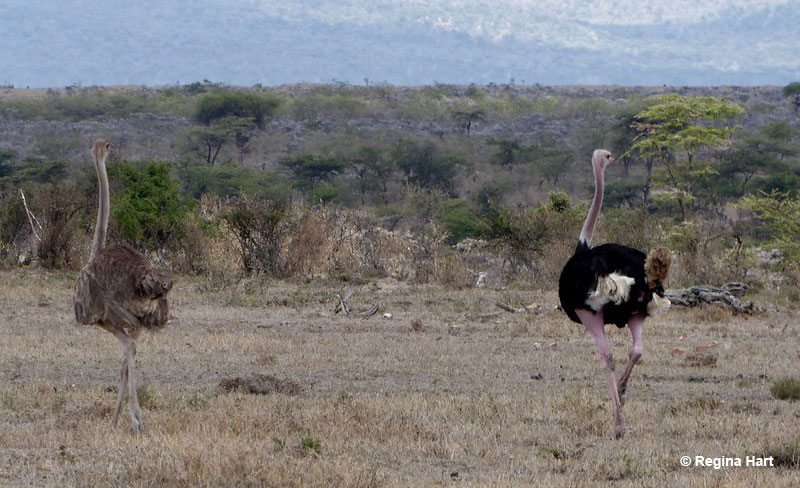
This avian order is composed of one bird family; the ostriches. Two species of this ancient flightless bird run on the open plains of sub-Saharan Africa.
Ostriches are huge birds and, at 7 to even 9 feet high, the tallest birds in the world!
They have rounded bodies, fluffy gray or black and white plumage, a long, thin neck, and long, strong legs. They usually occur in small flocks that forage by grazing grass, seeds, and other bits of vegetation. These birds can also eat some insects and small creatures but are mostly vegetarian.
Ostriches can be resident or move long distances in search of water and green pastures.
- Struthionidae: Common Ostriches, Somali Ostriches
Suliformes
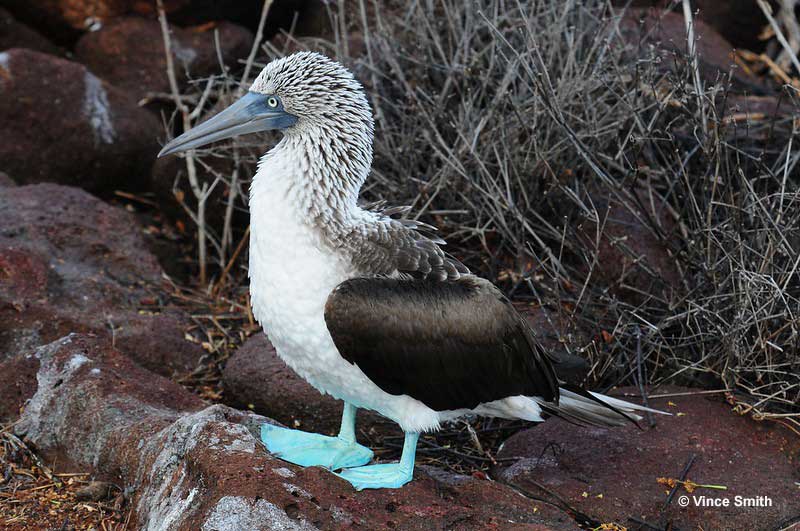
The Suliformes are large aquatic birds that live in coastal habitats, oceanic waters, and wetlands. All have webbed feet and a small bare pouch just below their beaks.
Most species also have long wings and longish tails, and fairly long, pointed or slightly hooked bills. However, the Flightless Cormorant of the Galapagos Islands has shorter, flimsy and useless wings.
Frigatebirds, boobies, and other members of this order mostly feed on fish and squid. They can catch these food items by diving into the water (boobies and gannets), stealing from other birds (frigatebirds), or catching food while swimming underwater.
They also perch and spread their wings to dry their plumage.
- Fregatidae: Magnificent Frigatebirds, Great Frigatebirds, Lesser Frigatebirds, Ascension Frigatebirds
- Sulidae: Brown Boobies, Blue-footed Boobies, Masked Boobies, Northern Gannets
- Anhingidae: Anhingas, African Darters, Oriental Darters, Australian Darters
- Phalacrocoracidae: Great Cormorants, Double-crested Cormorants, European Shags, Neotropic Cormorants
Tinamiformes
This avian order is made up of the tinamous, one of the oldest types of birds. These terrestrial birds have strong, stout legs, small heads, medium-length necks, and bodies shaped a bit like an American football!
Tinamous stalk the ground in rainforest, dry forest, and grassland habitats from Mexico to South America.
Most species forage alone for fruit, seeds, insects, and other small creatures.
Although tinamous can fly, they prefer to crouch and let their dull plumage camouflage them. If they have to fly, tinamous burst into the air on rapidly beating wings.
Some tinamous are also known for their beautiful, haunting whistled songs.
- Tinamidae: Great Tinamous, Little Tinamous, White-throated Tinamous, Darwin’s Nothuras
Trogoniformes
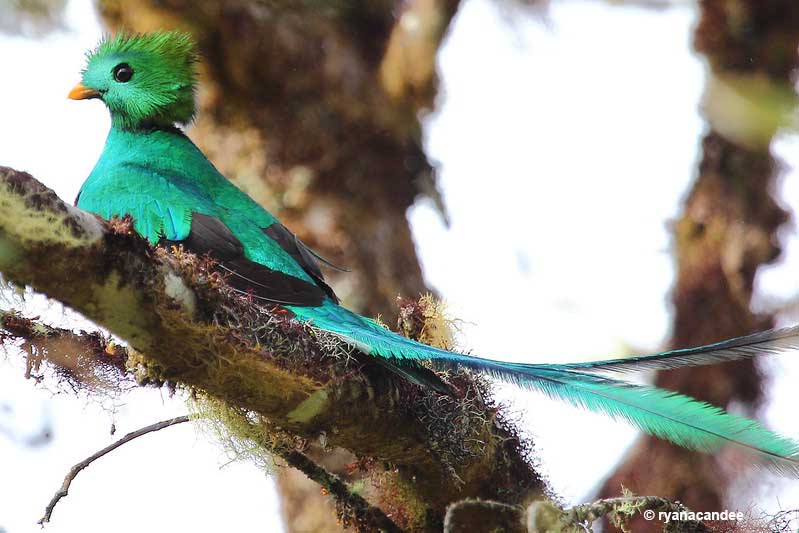
The Trogoniformes are composed of one bird family: the trogons. These birds have fantastic, iridescent plumage often highlighted with red, yellow, or blue. One species, the Resplendent Quetzal, has such an incredible appearance Mayans believed that it was a divine messenger!
Trogons nest in cavities in tropical forest habitats from Mexico to Argentina and in southern Asia. A few species also live in Africa, and both Cuba and Hispaniola each have an endemic trogon species.
These beautiful birds with rectangular tails have broad, short beaks used to pick fruit, along with some insects and small lizards. They spend a lot of time sitting on a perch, often giving barking-like vocalizations.
- Trogonidae: Resplendent Quetzals, Collared Trogons, Eared Trogons, Elegant Trogons
Frequently Asked Questions
How many species of birds are there?
There are around 1,180 bird species in the world. This number, however, is not set in stone – every year, there are some species that are declared extinct.
How many bird families are there?
There are currently 251 bird families recognized in 2024. But nothing is set in stone; this number might change in the coming years.
How are birds classified?
Birds are classified by taxonomists who use plumage, DNA, and other characteristics to categorize and place them into related groups. They categorize birds by subspecies, species, genus, family, and order.
What is the largest bird family?
The largest bird family is the Tyrannidae, or “Tyrant Flycatchers.” This family has 441 species.
What is the smallest bird family?
The smallest bird family could be any number of bird families composed of just one species. Some examples are the Yellow-breasted Chat, Olive Warbler, Limpkin, and Palmchat.
Are bats birds?
Although bats do have wings, they are still considered to be mammals. When it comes to their taxonomy, they create their own order.
Which ones surprised you the most? Let us know in the comments!


